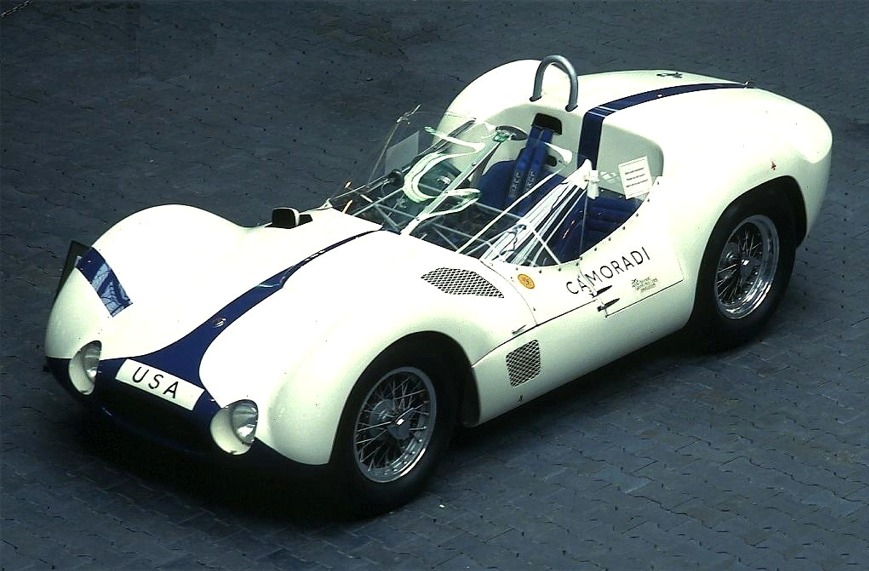 Maserati Birdcage
Maserati Birdcage Maserati Birdcage
Maserati Birdcage Maserati Birdcage
Maserati Birdcage Maserati Birdcage
Maserati BirdcageMaserati Birdcage 75th
The Maserati Birdcage 75th was a concept car created by automobile manufacturer Maserati and designed by Pininfarina and the design team, including Jason Castriota under the guidance of Ken Okuyama at Pininfarina.[1] It was first introduced at the 2005 Geneva Auto Show. It was named to honor the classic Maserati Birdcages of the 1960s and Pininfarina's 75th anniversary. The original car intent was discussed and pursued originally by Paolo Pininfarina, Pininfarina S.p.A, Franco Lodato and Peter Aloumanis, from Motorola during a business gathering in September 2004 at Pebble Beach, California
Chassis
The Birdcage 75th is built on the carbonfibre chassis of a Maserati MC12 GT1 race car and shares many components, most notably the engine.[1] The Birdcage 75th is powered by the Ferrari Dino F140 V12 engine of the MC12 and the Enzo Ferrari mid mounted at 65°th's engine has been tuned for racing and as a result produces around 700 brake horsepower.
Bodywork
The car's body was designed by Pininfarina to celebrate the company's 75th anniversary. A documentary called "Sleek Dreams" was filmed about the six-month design process.
The exterior is made of carbon fiber with diffusers at the rear and 2 spoilers that automatically raise at speed. The windshield is made of perspex and extends almost from the front to the back of the car; this is a necessity because of the driver's low seated position - if the windscreen ended higher, they would be unable to see the oncoming road.[1] This visibility problem is compounded by typical concept-car omissions like wing mirrors.
The Birdcage also lacks doors; instead, a bubble canopy composed of much of the front bodywork can be raised, in a similar manner to the Bond Bug, Ferrari Modulo and Saab's 2006 Aero X concept car. However, since the lone demonstrator model lacks air-conditioning or any form of climate control, and the bubble provides substantial 'glasshouse effect', journalists (including evo Magazine's Harry Metcalfe) driving the vehicle were reportedly forced to keep the bubble slightly open on hot days to cool the car's interior.
Interior
The cabin has a Head-Up Display (HUD) which is projected on to a clear panel raised in the centre of the dash. It shows information that would usually appear on dashboard instruments, including the tachometer and speedometer. Also projected is a digital image of Maserati's traditional analogue clock.[1]

IMMCULATE CONCEPTION: Psion Propulsion Drive
ReplyDeleteMechanicals: Engineered by DDD_DinoDesignDevelopement
La Cage Aux Folles:= ' Birdcage '